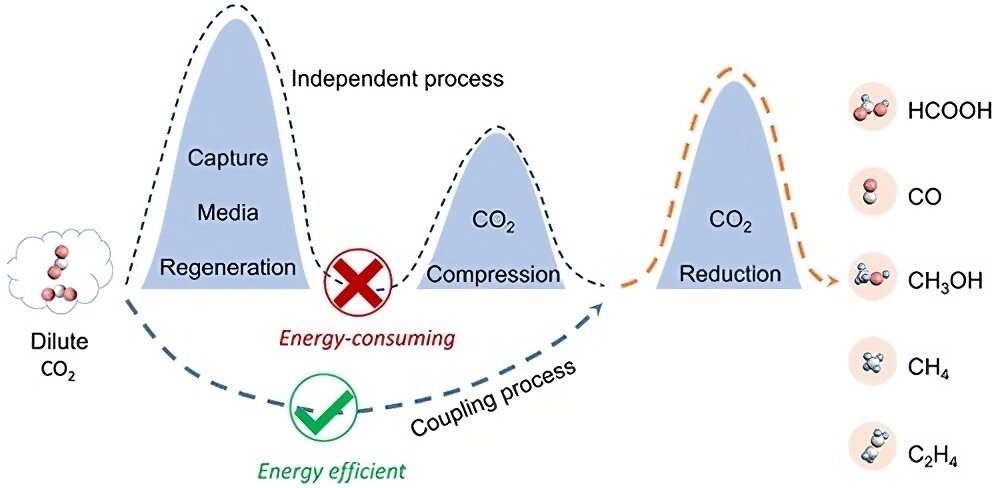Cutting-edge materials science and engineering are playing a crucial role in the field of clean energy conversion. To achieve sustainable development, researchers from various disciplines are working collaboratively to optimize their impact. Dr. Xiao Zhang, Assistant Professor in the Department of Mechanical Engineering at The Hong Kong Polytechnic University (PolyU), is leading research efforts focused on advanced materials and electrochemical reactors for clean energy conversion.
Dr. Zhang’s research on sustainable energy sources and production has garnered significant citations across multiple disciplines, including materials science, chemistry, and chemical and mechanical engineering. The research primarily focuses on decarbonization through clean electricity and the utilization of Earth’s abundant resources for the production of valuable chemicals.
Engineering plays a critical role in promoting sustainable development by providing solutions for energy systems, production, and resource management that reduce carbon emissions, conserve resources, and protect the environment. Dr. Zhang’s highly cited papers explore the use of novel layered materials for clean energy conversion. His research also extends to the conversion of waste pollutants, such as carbon dioxide, nitrate, and biomass, into valuable chemicals and fuels.
According to Dr. Zhang, “I am thrilled by this significant achievement in influencing frontier sciences and subsequent innovative applications. Our research has advanced scientific knowledge in materials science and chemical engineering, particularly in the understanding of 2D materials and the development of electrochemical reactors for sustainable production.”
Advancing the understanding of material structures and catalytic processes is crucial for clean energy production. According to Dr. Zhang, “Our research has facilitated the development of practical reactors capable of producing valuable chemicals at an industrial-relevant rate. These novel findings have a significant impact on the development of sustainable manufacturing, environmental remediation, and resource efficiency.”
Importance of Novel Research
Researchers strive to bring about scientific breakthroughs. Dr. Zhang’s work has unraveled fundamental theories and technologies in materials science, serving as valuable references for researchers across various disciplines.
Dr. Zhang states, “I’m encouraged by the high citation rates of our works, which bridge the gap between frontier scientific findings and practical production applications.” One of his highly cited studies focuses on catalytic interface engineering and electrochemical reactors for hydrogen peroxide (H2O2) production, as published in Nature Communications.
Another notable study in materials science explores the manipulation of material properties through structure tuning. Published in Nature Catalysis, the research reveals the amorphization of layered materials for highly efficient hydrogen evolution. These breakthroughs in material engineering have significant implications for various applications, particularly in electrocatalysis.
The integration of CO2 capture and electrochemical conversion is seen as a promising approach to reducing CO2 emissions. Dr. Zhang’s recent study, published in ACS Energy Letters, investigates the combination of CO2 capture and electrochemical conversion to develop an efficient and sustainable system for converting CO2 into valuable chemicals or fuel.
Dr. Zhang believes that interdisciplinary collaborations are key to achieving sustainable developments in various fields. He states, “Knowing that our work has significantly impacted the field, leading to further discoveries and innovations, is immensely rewarding. While keeping up with the latest advancements and addressing new research questions can be demanding, it is also highly fulfilling.”
The high citation rates not only increase the visibility of researchers within the scientific community but also attract more opportunities for collaboration, ultimately shaping the future of sustainable research on a global scale. Dr. Zhang’s goal is to drive positive change and advance the field of clean energy conversion.
More information: Qing Xia et al, Integration of CO2 Capture and Electrochemical Conversion, ACS Energy Letters (2023). DOI: 10.1021/acsenergylett.3c00738
Citation: Harnessing materials and mechanics science for a sustainable future (2023, July 25) retrieved 25 July 2023 from https://phys.org/news/2023-07-harnessing-materials-mechanics-science-sustainable.html
This document is subject to copyright. Apart from any fair dealing for the purpose of private study or research, no part may be reproduced without written permission. The content is provided for information purposes only.
Denial of responsibility! TechCodex is an automatic aggregator of the all world’s media. In each content, the hyperlink to the primary source is specified. All trademarks belong to their rightful owners, and all materials to their authors. For any complaint, please reach us at – [email protected]. We will take necessary action within 24 hours.

Jessica Irvine is a tech enthusiast specializing in gadgets. From smart home devices to cutting-edge electronics, Jessica explores the world of consumer tech, offering readers comprehensive reviews, hands-on experiences, and expert insights into the coolest and most innovative gadgets on the market.


